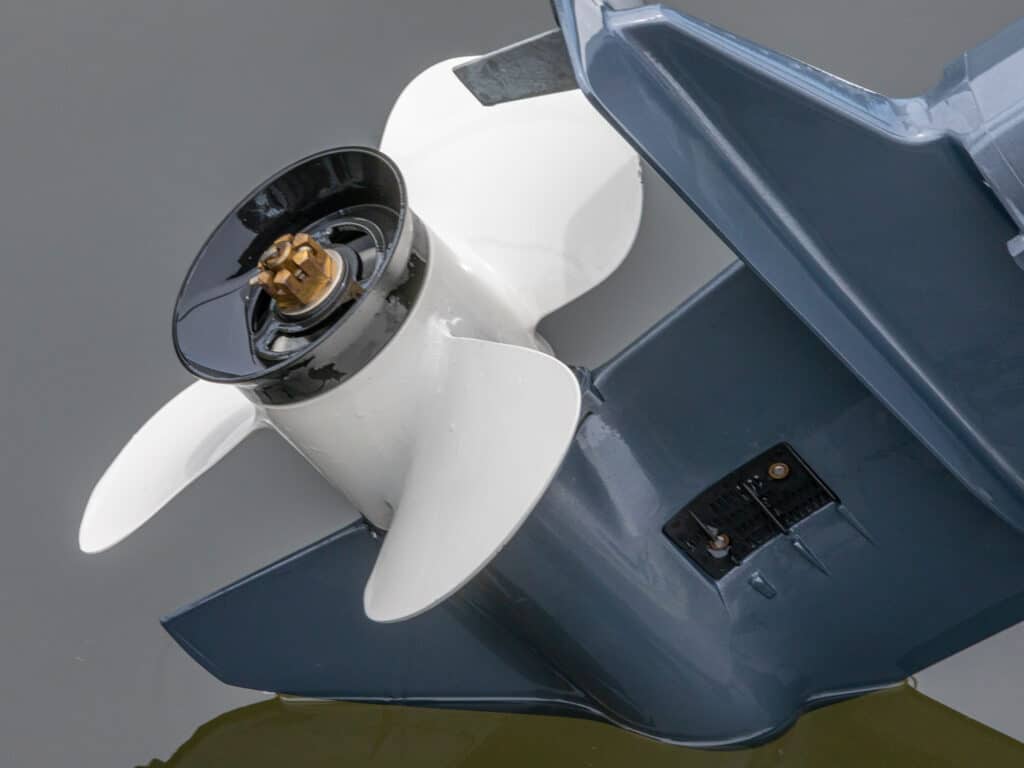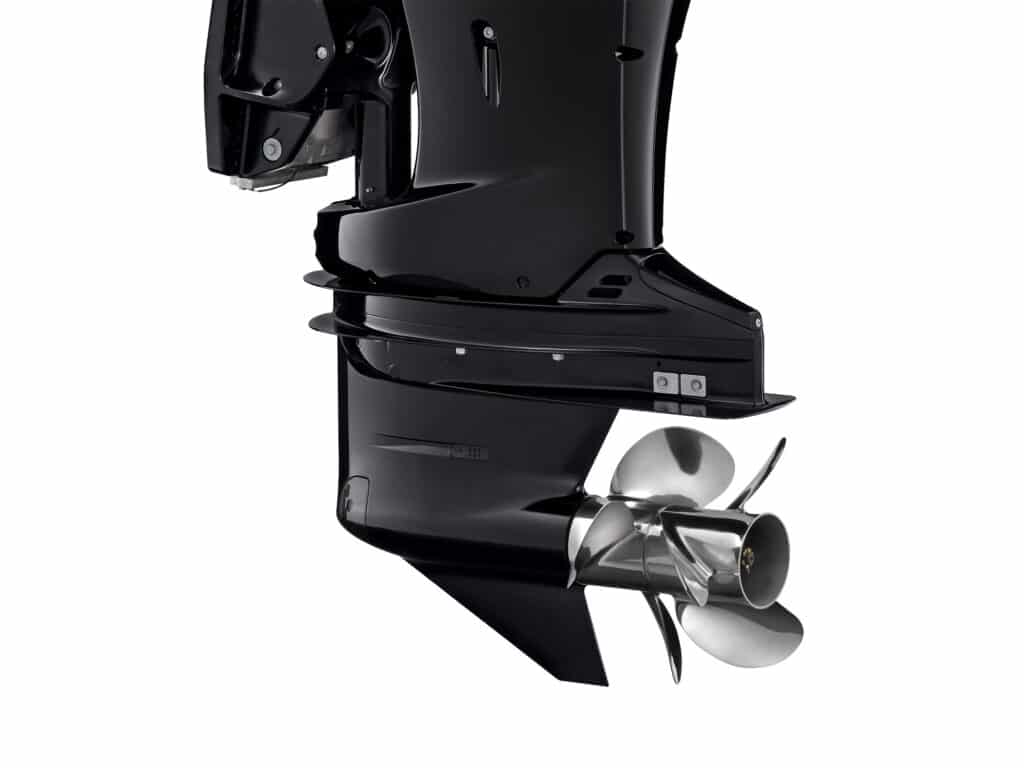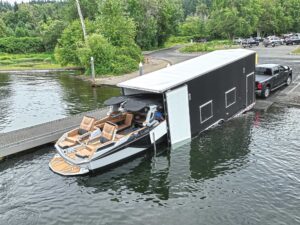
A pontoon boat presents a special challenge in docking: It puts multiple keels in the water, and thus resists pivoting. The wide, flat sides catch the wind, compounding your handling headache. The experts at Mercury, Yamaha and Suzuki agree that the best way to maximize control is to maximize propeller blade area.
“The more blade area offered by the prop, the more contact you’ll have with the water,” says David Meeler, new product introduction manager for Yamaha. “Look for a prop with blades shaped like elephant ears.”
Maximizing blade area gains you thrust authority, which translates into faster, more forceful response to throttle input. The trade-off—with props, there’s always a trade-off—will be increased drag at speed. Don’t let this concern you, unless you are propping a high-performance pontoon and speed is the goal.
Yamaha offers its Talon Pontoon prop for T50 to F115 model outboards. It has large blades and minimal rake expressly to maximize thrust and control. The Yamaha T50 and T60 outboard models come equipped with a Dual Thrust prop that improves thrust in reverse by venting the exhaust forward of the prop hub. For Yamaha motors above 115 hp, Meeler usually suggests the Saltwater Series II prop with up to a 15.75-inch diameter and big blades that perform well when pushing a pontoon boat.
“You need to tell the dealer how you’ll usually use the boat, whether that’s with 15 people aboard or just your spouse and a dog,” says Gary Diehl, senior category manager for props at Mercury. “The dealer can help you pick a prop with the best pitch to match the load, but the prop model should be one with max blade area.”
Mercury offers its FourStroke 90 and 115 models with a 4.75-inch-diameter Command Thrust gear case with a low gear ratio to slow prop speed and allow space for large 16-inch-diameter props. Diehl’s go-to prop for pontoon applications is the three-blade Enertia model, which is offered down to an 11-inch pitch and has large blades designed for max-thrust applications.
Read Next: Choose the Best Motor for Your Pontoon Boat

David Greenwood, general manager of the Suzuki Marine Technical Center, points out that any Suzuki outboard from 150 hp and up can run a 16-inch-diameter prop intended for its biggest V-6 model motors. Thrust is also the reason the dual-prop Suzuki DF300B has become a popular option on larger pontoon boats and tritoons.
“Pontoon owners with control issues should also check the outboard mounting height,” Greenwood says. “I frequently see pontoons that would benefit from lowering the motor by one or two mount holes to get the prop deeper in the water, especially if you are frequently out with a big group of passengers, who usually sit forward in the pontoon. This passenger weight lowers the bow and can raise the engine by an inch or more, and you lose thrust.”
One more tip: Don’t forget to trim your outboard down before approaching the dock.









